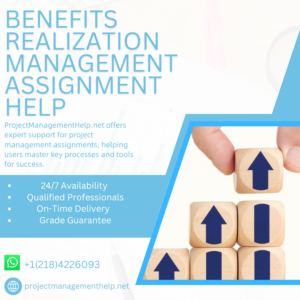BRM should also be integrated into the business case as a central element of governance for every project, according to interviewees who recommended improving its current state: placing more emphasis on benefit analysis at the front end; increasing integration into business cases and governance structures; providing clearer governance oversight, and developing tools that reflect BRM’s fluid nature.
One of the key issues is that people do not understand how to classify benefits and understand how they link. This may be partly because benefits are often unclear and ambiguous, or even more so as they emerge over time and take many forms; hence a framework should help facilitate this.
Analyze benefits
Establish both explicit and implicit benefits, including intangibles like employee satisfaction or increased sales. Assign realistic Monetary Values to each cost and benefit; compare results. Use this data to decide whether the project warrants proceeding.
Interviewees also noted the need for greater rigor in defining and assessing benefits, particularly by moving away from substance-driven analyses towards procedures-driven approaches: an acceptance of fluidity as opposed to one definition that covers all possible spatial-temporal contexts simultaneously.
To do so, it is necessary to identify key usage metrics for each of the benefits your company provides – for instance 401k participation or healthcare claims data can help provide insights into how much each benefit is actually being utilized and where there may be room for improvement. In turn, using this data allows your company to develop plans that guarantee they continue providing valuable benefits to employees and customers alike.
Make the change standard
Benefits of any business project can only be realized if they are delivered and sustained as planned and anticipated by an organization. To do this, an effective workflow must include benefits identification and analysis, project execution, caretaking of benefits once transferred over to operations as planned and sustained – one way of accomplishing this would be creating a benefits realization plan that includes tools like roadmaps, dashboards and RACI reports to achieve this end.
An essential aspect of this workflow is constant visibility. This includes regular communication, the celebration of project successes and review of intended benefits; as well as creating a framework to distribute visibility to stakeholders on an “as needed” basis – thus minimizing information oversaturation risks while helping leadership focus on what matters most; while simultaneously helping identify anomalies and improve future benefit estimation. All this requires an effective benefits management platform capable of supporting this workflow.
Assess the impact
As is true for any project management discipline, effective leadership is key in benefits realization. Unfortunately, most organizations lack leaders whose sole duty it is to analyze the impact of benefits; instead they rely on teams completing projects without proper oversight, and then leave it at that. Breese emphasizes this problem, noting that in order for projects to produce intended results they require a strategy which links these projects with impact; without such connections the organization may struggle when attempts don’t produce tangible results and adjust business strategy when desired outcomes do not materialize.
One way of approaching this challenge is to appoint a benefits champion reporting directly to the PfMO or another senior executive. The champion should then focus on building successful relationships with Stakeholders and capitalizing on political dynamics to keep benefits in the limelight. A successful process also includes setting up processes for benefit forecasting, tracking metrics, and gap analysis which provide useful information that can improve future benefit estimations as well as feed back into a portfolio communication feedback loop that engages Finance, project teams, and other interested parties.




